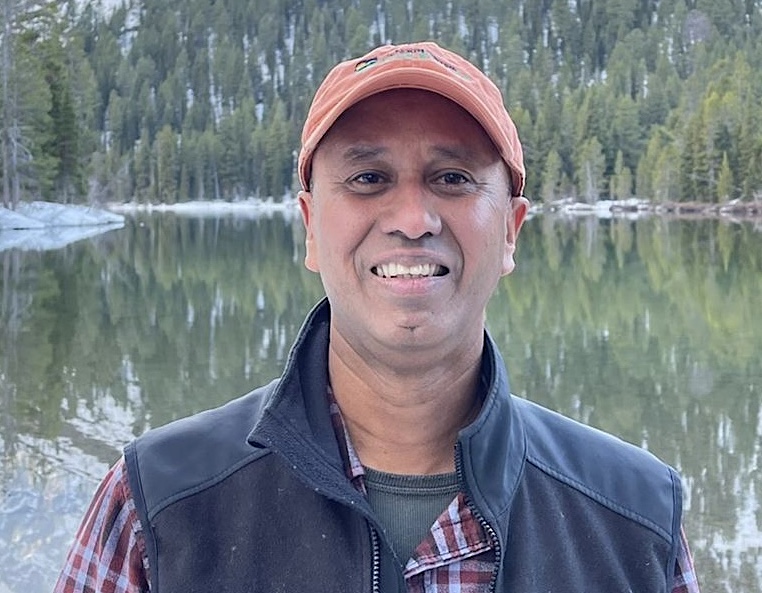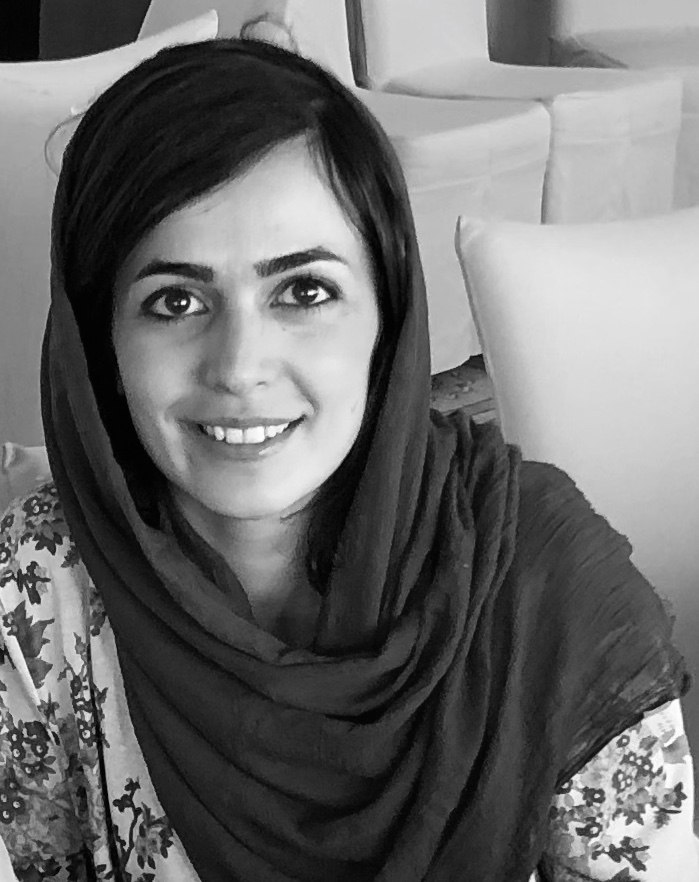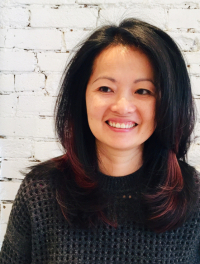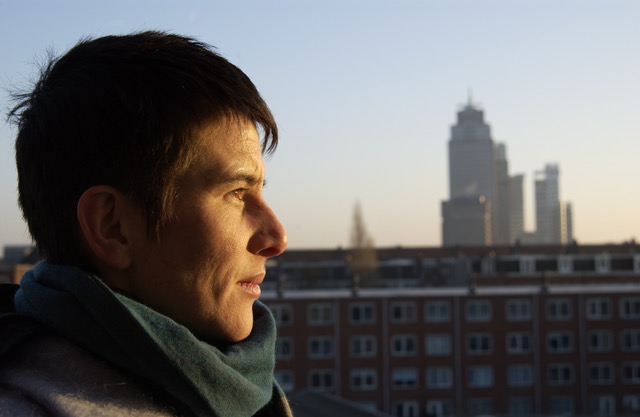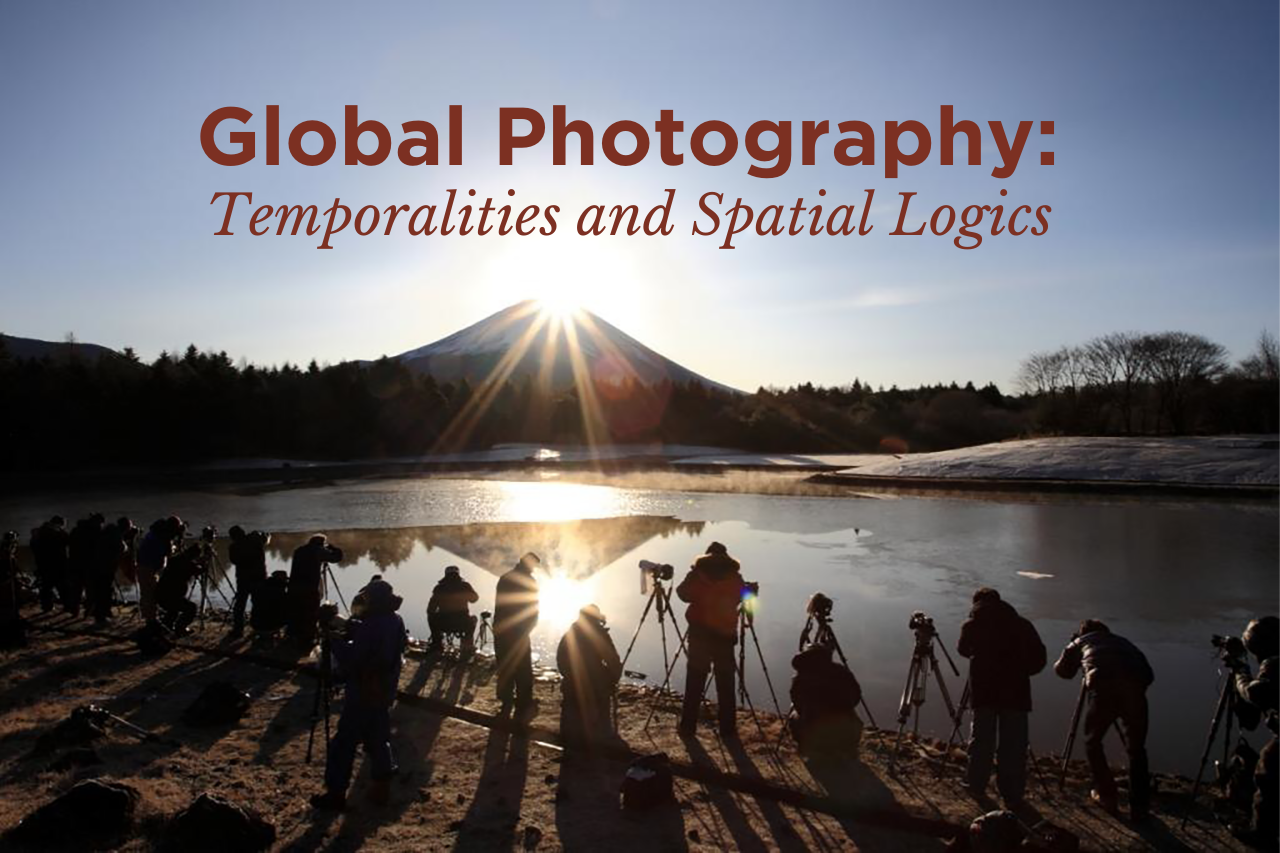
Courtesy the artist, Peter Freeman Inc., New York
and Frith Street Gallery, London
This virtual symposium questions how thinking creatively and critically through photography’s temporalities and spatial logics can open up new models for considering global photographic practices. Organized in two parts, over two days, each panel will consist of two practitioners and two scholars who will share a pre-recorded ten-minute presentation followed by an hour-long moderated discussion amongst the participants, and a Q&A session with audience members.
Global Photography: Out of Time
Thursday, September 9, 2021
10 AM – NOON MT / 11 – 1 PM CT
Featuring: Subhankar Banerjee, Thy Phu, Mark Sealy, and Will Wilson. Moderated by Heather Diack and Erina Duganne.
Global Photography: Across Space
Friday, September 10, 2021
10 AM – NOON MT / 11 – 1 PM CT
Featuring: Samaneh Moafi, Christopher Pinney, Leigh Raiford, and Fiona Tan. Moderated by Heather Diack and Terri Weissman.

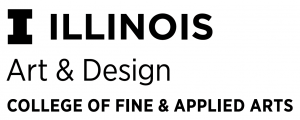
Featured Speakers
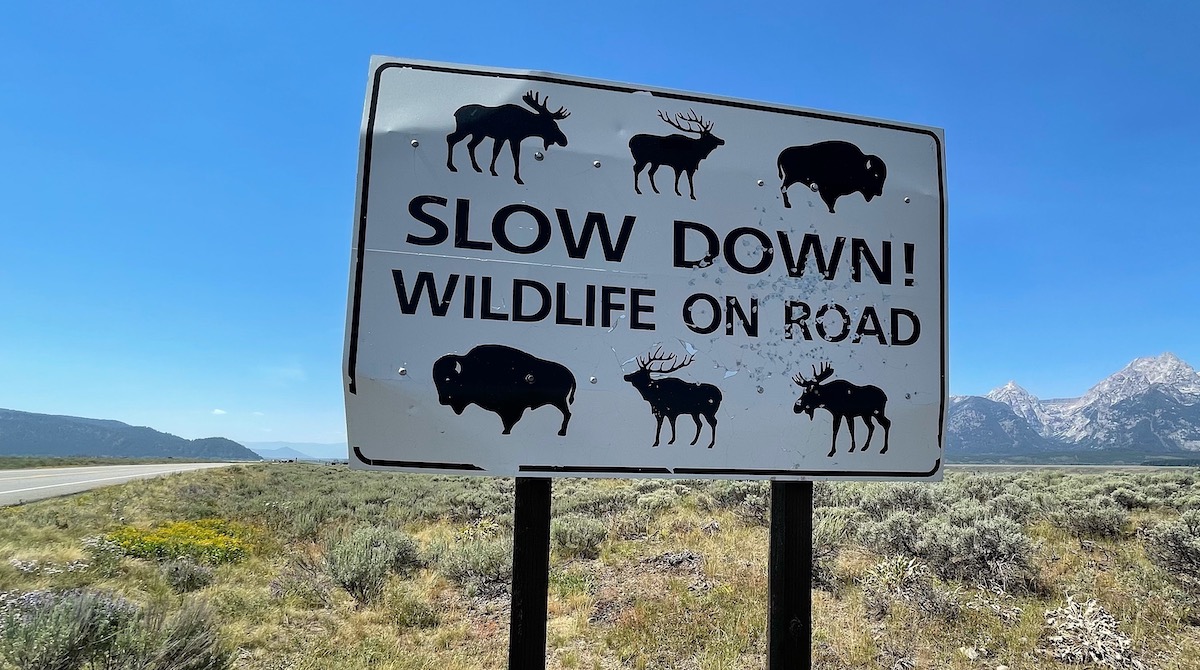
SUBHANKAR BANERJEE
Decisive Moment Expands to Extended Time: From Aesthetic to Ecology in Photography
It is difficult for me to imagine any concept in photography which relates to and explicitly signals “Time” that has proven to be more significant and influential than the “Decisive Moment,” which was introduced by the late-great twentieth-century French photographer Henri Cartier-Bresson. While “Decisive Moment” is framed with time, the concept’s primary purpose, its raison d’être is aesthetic—to create a photograph that is visually strong, appealing, and intriguing with a key moment in time assisting in making such a photograph. The concept worked well for the twentieth century. For our time, however, in the twenty-first century, when we are engulfed in the most challenging crises of human history, including biological annihilation and climate breakdown, both caused by human actions—we need to reconsider “decisive moment” and, the entertainment, the intrigue and even shock at times that comes with a photograph that was successfully made at a decisive moment. I humbly offer the idea of “extended time” that may help us to address the ecological crises of our time more effectively with photography. In my brief 10-minute remarks, I’ll share three photographs (all taken with mobile phones), including “SLOW DOWN! WILDLIFE ON ROAD” to introduce the concept and discuss its generative potential and, I look forward to critical and constructive feedback.
Subhankar Banerjee is an artist, writer, conservationist, and public scholar. His place-based and community-engaged interdisciplinary and intersectional efforts aim to advance multispecies justice to mitigate the intensifying biodiversity and climate crises. He works closely with Indigenous Gwich’in and Iñupiat community members and environmental organizations to defend significant biological nurseries from oil and gas development in Arctic Alaska, including the Arctic National Wildlife Refuge. Coeditor (with T.J. Demos and Emily Eliza Scott) of Routledge Companion to Contemporary Art, Visual Culture and Climate Change (Routledge, February 2021), Subhankar was most recently cohost (with U.S. Senator Tom Udall) of the UNM Biodiversity Webinar Series (Fall 2020), co-curator (with Josie Lopez) of Species in Peril Along the Rio Grande (Fall 2019), and convener of the last oil: a multispecies justice symposium (February 2018). His photographs have been exhibited in more than fifty museum exhibitions around the world, including Nature’s Nation: American Art and Environment at the Princeton University Art Museum (2018-2019) and the 18th Biennale of Sydney: all our relations (2012); and public and scholarly writing have appeared in many publications, including Global Photography: A Critical History (Routledge, 2020) and Ecocriticism and Indigenous Studies: Conversations from Earth to Cosmos (Routledge, 2017). For his conservation efforts, Subhankar received a Greenleaf Artist Award from the United Nations Environment Programme, a Cultural Freedom Award from Lannan Foundation, a National Conservation Achievement Award from the National Wildlife Federation, a Special Achievement Award from the Sierra Club, and was named an Arctic Hero by the Alaska Wilderness League. Subhankar is the founding director of both the Center for Environmental Arts and Humanities in the Department of Art and the Species in Peril project at UNM.

SAMANEH MOAFI
The Cloud Atlas as a Project
Toxic clouds are increasingly used by states, militaries and corporations to colonise the air across different scales and durations. In Chile, teargas is used by the police to occupy the air of roundabouts and streets, pushing people out of the public spaces. In Louisiana, clouds of PM2.5 produced by petrochemical facilities along the Mississippi river take the air of majority black communities living in the region. In Indonesia, clouds of carbon rising from fires induced intentionally in industrial palm oil plantations, accumulate into a vast territory, blanketing a zone that extends to Malaysia, Singapore and southern Thailand and Vietnam.
When photographed from within and by their breathers, toxic clouds appear as conditions of optical blur and obscurity. Some are invisible to the lens of regular smartphone cameras and others can be seen for only a short portion of their existence. As archetypes of transformation, they change from columns to mushrooms before dissipating into the atmosphere. Providing reliable analysis of the clouds, including their sources, their contours, their concentrations and their deposits on the ground demand new methods of image analysis.
While the new Open Source Intelligence tools (OSINT) have given image and video documentations of violence an increasing evidentiary value, photographs of toxic clouds continue to pose a challenge. Building on some of the caseworks I have developed with my colleagues as Forensic Architecture, my contribution sets out to respond to this challenge.
Dr. Samaneh Moafi is the Senior Researcher at Forensic Architecture, Goldsmiths University of London. She provides conceptual oversight across projects and in particular oversees the Centre for Contemporary Nature (CCN), where new investigative techniques are developed for environmental violence.
Dr Moafi graduated in architecture from the University of Technology, Sydney where she specialised in environmental urbanism in conflict zones. She earned her PhD, from the Architectural Association (AA) School of Architecture with a dissertation on the contemporary history of state initiated mass housing in Iran and the class identities and gender roles it informed. Her articles have appeared at the Architectural Research Quarterly, Journal of Islamic Architecture and the Avery Review among others.
She taught at the University of Technology, Sydney, and the Bartlett School at University College, London, and led courses at the Royal College of Arts and the Architectural Association, both also in London. She has lectured at the University of Edinburgh, Newcastle University, the Royal College of Arts, University College, London and the Architectural Association, and internationally at Columbia University (US), Purdue University (US), Piet Zwart Institute (Netherlands), École Nationale Supérieure d’Architecture de Versailles (France), Kuwait University, and the University of Technology, Sydney (Australia).
Her work has been exhibited globally in forums such as the Manchester International Festival (2021), Storefront for Art and Architecture (2020), Sharjah Architecture Triennial (2019), Tate Britain (2018), MACBA (2017), Venice Architecture Biennale (2016) and Gwangju Biennale (2013).
Still from “Explosion at Port Beirut”, Courtesy of Forensic Architecture, 2020.

THY PHU
Reenactment and Remembrance: An-My Lê’s “Small Wars”
How might images of war reenactment challenge the history of photography? How might such images offer a means of grappling with history through photographic encounter? This talk takes up these questions by focusing on Small Wars, a photographic series in which artist An-my Lêjoined white male participants in Virginia in reenacting the war in Vietnam. Lê’s anachronistic use of equipment and photographic style underscores multiplicities of time and space, which reveal themselves on the psychic battleground of reenactment. Her disconcerting presence in scenes of reenactment lays bare a sense of misrecognition, as a contentious history replete with attendant misinterpretations gives way to the imprecise approximations of memory, an imagined projection of a past as it might yet still be, replayed without end. The provocative visual depiction of entwined yet fraught performances in the photographic series Small Wars suggests that war photography encompasses documents of events as they could have happened, retrospective fantasies of what could have been and dynamic events, which conjure forth communities of mourning, even as they bring to light these communities’ mutual fantasies and the misalignments between them. The series suggests that reenactments constitute an event of photography that engages diasporic Vietnamese and white male participants in performances which, in projecting alternative outcomes and histories of war, constitute “warring visions.”
Thy Phu is Professor of Media Studies at the University of Toronto. She is coeditor of Feeling Photography, also published by Duke University Press, and Refugee States: Critical Refugee Studies in Canada. She is also author of Picturing Model Citizens: Civility in Asian American Visual Culture.
An-My Lê, Rescue, 1999-2002
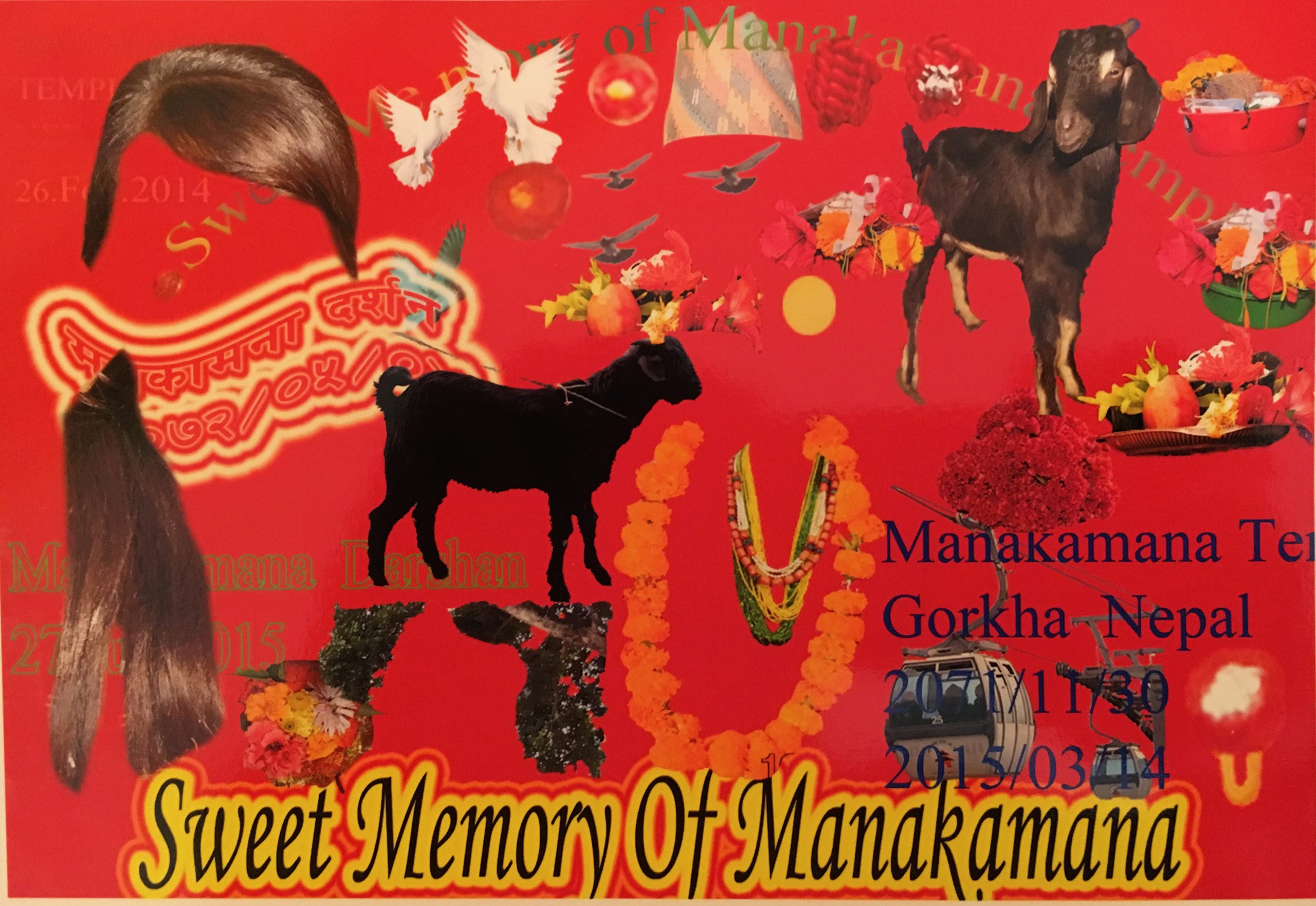
CHRISTOPHER PINNEY
Troubled by Photography: Contingencies of the Image in South Asia
Engaging photography globally entails the study of actually existing social practice. Frequently the diversity of practice is presented as an argument against the possibility of an ontology of photography, the seemingly unavoidable conclusion being that there are multiple culturally embedded and incommensurable “photographies” (as in Tagg’s work, and some ethnographic approaches). My approach by contrast builds upon Benjamin, Kittler, and Latour in assuming that photography is more than simply a screen for the projection of the “social” and that media operates within certain “technomaterial” constraints. Empirical investigation of photography as a global practice can illuminate what those constraints are. In this presentation I explore one aspect of photography’s ontology: its contingency and the troublesome and subversive nature of the event. This is evidenced by the lengths people in different parts of south Asia go to circumvent and supress this. A very particular ritual practice of photography in the Nepali pilgrimage site of Dakshinkali is offered as an example. At Dakshinkali the rich contingency of the analog event is rejected in favour of an “impoverished” digital standardization. My narrative describes a kind of figure-ground reversal: what practice, unsuccessfully attempts to negate directs our attention to an inescapable ontology. Variation in practices, and apparent inversions or negations, do not imply multiple “photographies”. Negation may testify to the power of that from which one seeks escape. A global view need not lead to “de-centering”. The road from Dakshinkali leads back to central questions about photographic ontology.
Christopher Pinney is Professor of Anthropology and Visual Culture at University College London. In 2019 he was a Visiting Professor at EHESS Paris and delivered a series of GIAN lectures at Jawaharlal Nehru University, Delhi. His research interests include the visual culture of South Asia, with a particular focus on the history of photography and chromolithography in India. Amongst his publications are Camera Indica (1997), ‘Photos of the Gods’ (2004), The Coming of Photography in India (2008), Photography and Anthropology (2011). He is currently leading the ERC Advanced Grant project “Citizens of Photography: The Camera and the Political Imagination”.
Headshot by Ravi Muni Studio, Kathmandu.
Montage of Photoshop elements used at Dakshinkali, Nepal.

LEIGH RAIFORD
When Home is a Photograph: Kathleen Cleaver’s Albums of Exile
This talk examines how former Black Panther Party Communications Secretary Kathleen Neal Cleaver has used photography to make “home” in the world. Through close examination of a family photography album made by Cleaver of her family’s time living in exile in Algeria and France, 1969-1972, and drawing on my three years of working with Cleaver leading a team organizing and cataloging her vast personal photography archive, (since acquired by Emory University in Spring 2020), I consider the everyday image making practices that a public figure committed to improving the conditions of Black lives globally has engaged to imagine, identify, create, tabulate, inhabit, leave and, sometimes, destroy “home.” While Cleaver’s photography collection broadly, and the family album specifically, have great political and historical significance, enriching our knowledge about the Black Panther Party, the work of Black internationalism in the era of Black Power, and gender politics in the context of Black revolutionary struggles, it is perhaps best understood as a family archive. Thus, I read the Algiers album as a Black-woman authored text that offers an affective and personal history of a movement that has been conveyed primarily as historical document. Its form as a family album forces us to reckon with the messiness of movement and cannot deny the failures and disappointments of family relations–whether a difficult marriage, a growing community of exiles, family as a metaphor for nationalism or as a map of intergenerational kinship ties–as well as the possibilities and limitations of photography itself.
Leigh Raiford is an associate professor of African American Studies at the University of California, Berkeley, where she teaches, researches, curates and writes about race, gender, justice and visuality. She is the author of Imprisoned in a Luminous Glare: Photography and the African American Freedom Struggle; co-editor with Heike Raphael-Hernandez of Migrating the Black Body: Visual Culture and the African Diaspora; and co-editor with Renee Romano of The Civil Rights Movement in American Memory. She is completing a book entitled, When Home is a Photograph: Blackness and Belonging in the World.
Gordon Parks, Eldridge Cleaver and His Wife Kathleen, Algiers, Algeria, 1970
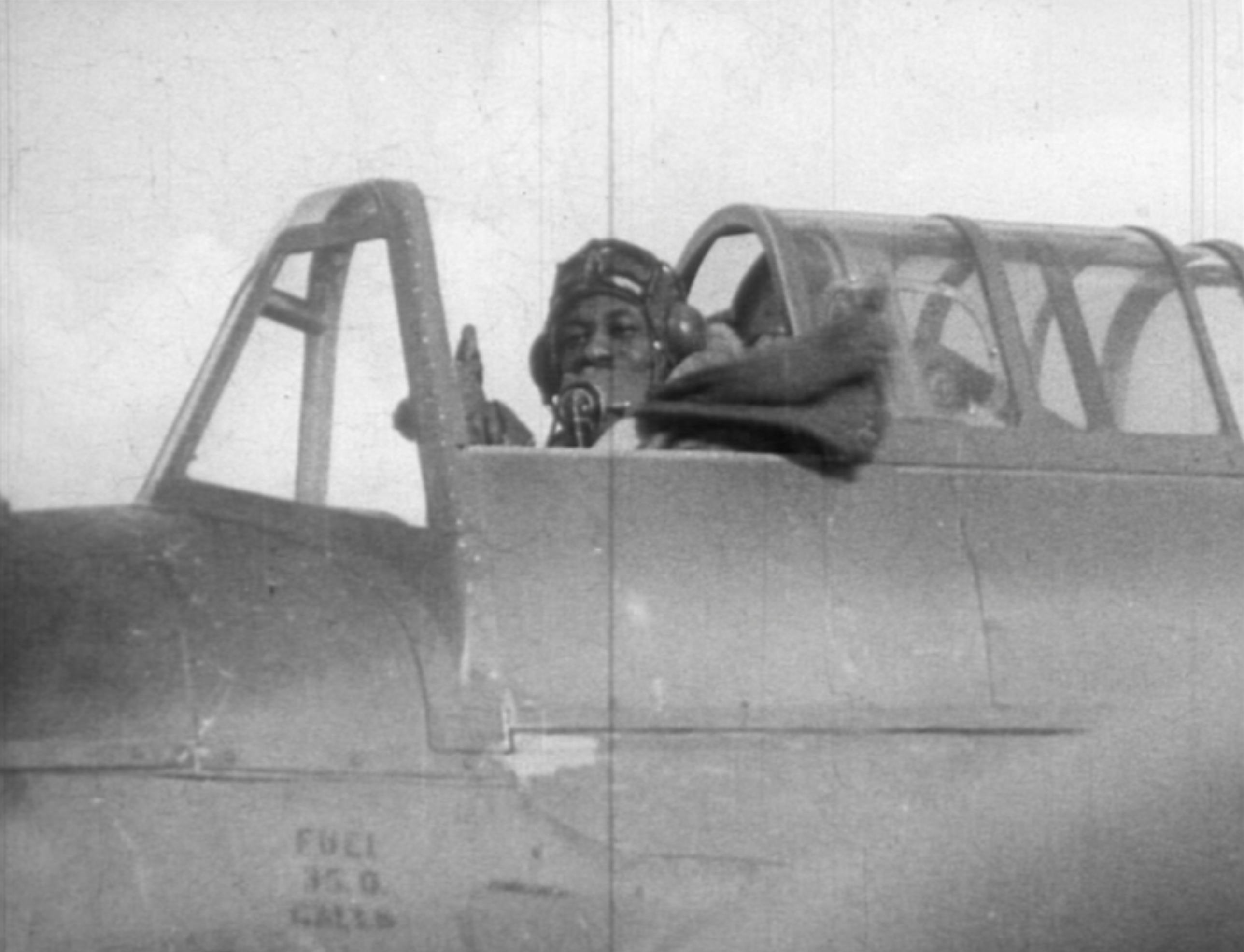
MARK SEALY
African Cosmologies – The End of Waiting – Liminal Life
The unknowing aspects of production (the making, feeling, doing, process), the unformulated spaces and times of our creative being, are where our humanity’s call and responses reside and where praxis as a form of survival flourishes. If we do not provide the space for coexistence, justice, recognition, reparation, making and sharing, history will remain a tragic form of denial full of angry ghosts that will continue to haunt our cultural institutions. The cultural ghost ‘is about that which has been silenced. All those things that a society does not want to see. They are more powerful when they appear in the form of the super natural because that way you can’t ignore them. They scare you because they are full of rage. My ghosts are angry and they are angry because they have been ignored and because what has happened to them has being ignored not just by one person but by society; the system ignores them and the only way to break that silence is by screaming.’ 1
Photography is omnipresent, sensorial, multidirectional, a layered, fluid, sonic creative process that permeates and resonates across our planet. The radicality of recognising the sensorial or disruptive jazz-like experience of photography is that it frees the viewer from the confines of a purely Eurocentric aesthetic desire to contain frame, chart, collect and own all the meanings an image might produce. Working towards a more improvised and receptive way of thinking through photography opens up space for sensing, feeling and perceiving the work that a photograph generates across different individual, temporal and cultural experiences.
Dr Mark Sealy, Executive Director of Autograph (1991) and Principal Research Fellow: Decolonising Photography at University of the Arts London (University Arts London). Sealy is interested in the relationship between photography and social change, identity politics, race, and human rights. He has written for many of the world’s leading photographic journals, produced numerous artist publications, curated exhibitions, and commissioned photographers and filmmakers worldwide.
1 https://www.bbc.co.uk/programmes/m000mt18
BBC Radio 4 Short Cuts Tuesday 22 Sep 2020
Ghosts featuring Mariana Enríquez.
Image Still from Film Titled. Colonial Film Unit – Ministry of Information UK 1943. Africa’s Fighting Men. Pilot – Officer Peter Thomas, R.A.F.

FIONA TAN
The Twilight Zone
For me the twilight zone is the magical, hybrid area between movement and stillness, between photography and film. Some brief reflections regarding spatial histories in relation to lens-based, time-based images. Included in this presentation are excerpts from Facing Forward (1999), Elsewhere (2018) and Ascent (2016).
“Journeys to relive your past?” was the Khan’s question that this point,
a question which also could have been formulated:
“Journeys to recover your future?”
And Marco answered: “Elsewhere is a negative mirror.
The traveler recognizes the little that is his,
discovering the much he has not had and will never have.”
– Italo Calvino, Invisible Cities (from the voice-over of Facing Forward, Fiona Tan (1999))
Fiona Tan (1966) studied at the Rietveld Academie and at the Rijksakademie voor beeldende kunsten. Over the past twenty years her video installations, films and photographic works have gained increasing international acclaim and have been exhibited all over the world. In 2009 she represented The Netherlands at the Venice Biennial and in 2010 she took part in the Architecture Biennial in Venice. Presentations of her work have included Documenta 11 as well as many international biennials. In 2016-17 she was artist in residence with a fellowship at the Getty Center, Los Angeles. Solo exhibitions have taken place at institutions including the 21st Century Museum of Contemporary Art, Kanazawa, New Museum of Contemporary Art, New York, Museum für moderne Kunst, Frankfurt, Vancouver Artgallery, the Baltic, Gateshead, Museum de Pont, Tilburg,MAC’s, Grand Hornu. Her work is included in collections such as the Tate Modern, Guggenheim, Centre Pompidou, Stedelijk Museum Amsterdam, MCA Chicago and Schaulager, Basel.
In Autumn 2020 the mid-career retrospective With the other hand will open with a double solo exhibition simultaneously at Kunsthalle Krems and the Museum der Moderne Salzburg, Austria.
Still from Ascent (2016), Fiona Tan. Courtesy the artist and Peter Freeman Inc. New York and Frith Street Gallery, London
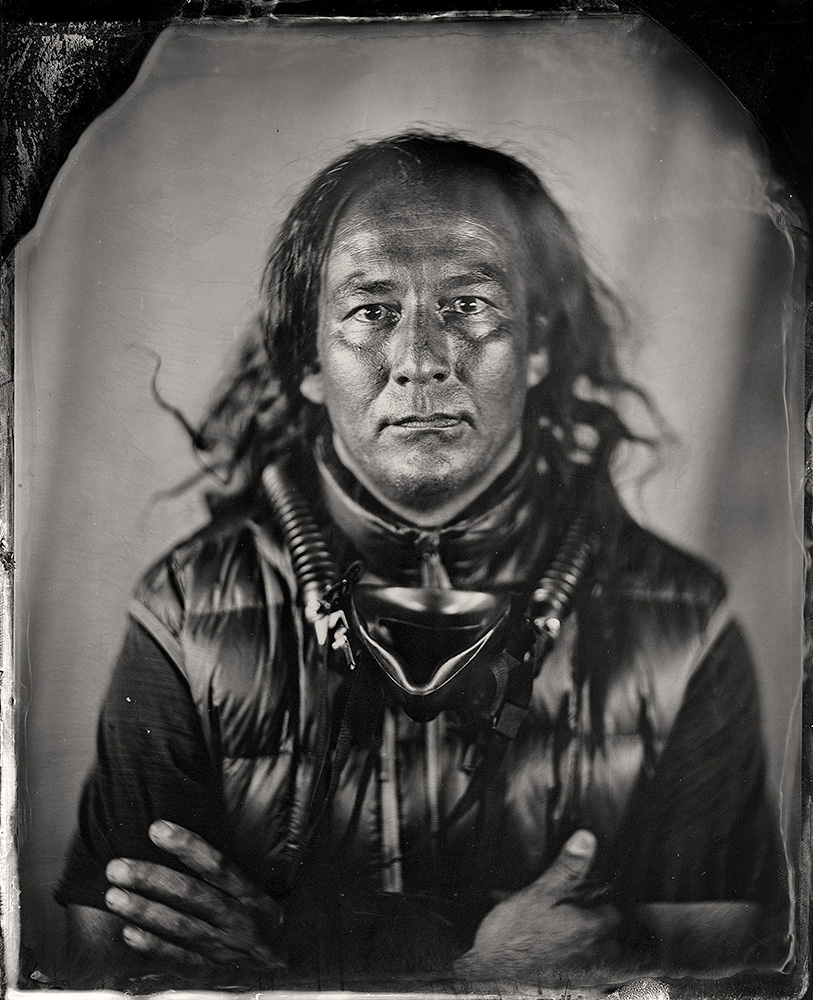
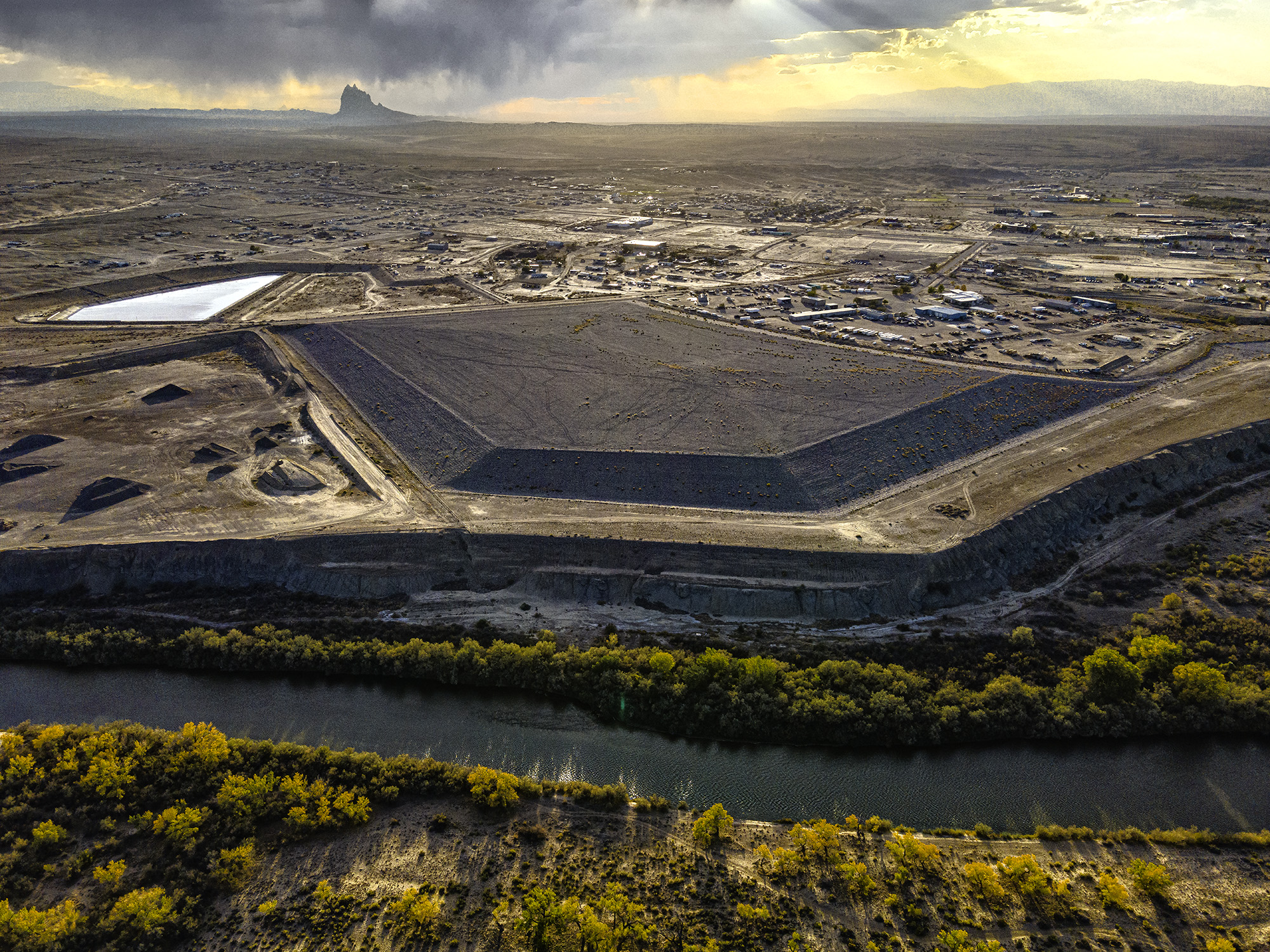
WILL WILSON
Connecting the Dots for a Just Transition: Nuclear Colonialism on Dinétah
My presentation will focus on the Connecting the Dots project proposal. The project raises awareness about a critical opportunity for a Just Transition on the Navajo Nation as it addresses remediation following uranium extraction that has poisoned the land and impoverished a people. I will create an unconventional photographic survey using drone-based, aerial and App- activated photography to help Diné people re-story our narrative. My project will present a portrait of environmental and social poverty, but more importantly, shape a platform for voices of resilience, wisdom, and vision for a transition to restorative systems of economy and memory making. This survey will advocate for a new approach to environmental remediation on the Navajo Nation, with the aim of collaborating with Diné scientists, documentarians, and artists.
In this project I will blend historic photographic process with augmented reality and drone-based aerial photography to reinscribe Indigenous voice and agency onto what has historically been a technology of speculation, surveillance and waste landing. Guided by an ethics-based aesthetics, restorative and new media accounts of the Land and People will inspire awareness, activism, and change.
The project asks, “How can we martial Indigenous Ways of Knowing — our deep understanding of the intersection of Land, People, and the natural world — with a critical knowledge of the machinations of colonization? Can a New Indigenous Cartography reveal a path to decolonization?”
Will Wilson’s art projects center around the continuation and transformation ofcustomary indigenous cultural practice. He is a Diné photographer and trans-customary artist who spent his formative years living on the Navajo Nation. Wilson studied photography, sculpture, and art history at the University of New Mexico (MFA, Photography, 2002) and Oberlin College (BA, Studio Art and Art History, 1993). In 2007, Wilson won the Native American Fine Art Fellowship from the Eiteljorg Museum, in 2010 the Joan Mitchell Foundation Award for Sculpture, and in 2016 the Pollock-Krasner Foundation Grant for Photography. Wilson has held visiting professorships at the Institute of American Indian Arts (1999-2000), Oberlin College (2000-01), and the University of Arizona (2006-08). In 2017, Wilson received the NM Governor’s Award for Excellence in the Arts. His work is exhibited and collected internationally. Wilson is program Head of Photography at Santa Fe Community College.
https://willwilson.photoshelter.com
Moderators and Organizers

Heather Diack
Associate Professor of Art History,
University of Miami

Erina Duganne
Professor of Art History,
Texas State University

Mary Statzer
Curator of Prints and Photographs,
UNM Art Museum

Terri Weissman
Associate Professor of Art History,
University of Illinois, Urbana-Champaign

This conference draws inspiration from Global Photography: A Critical History. Co-authored by Heather Diack, Erina Duganne, and Terri Weissman, this book recounts the history of photography through a series of analytical framings that encompass a variety of historical contexts, a diversity of locations, and a plurality of producers. By widening—geographically and conceptually—historical points of reference and contemporary points of entry, Global Photography: A Critical History investigates the multivalent practices and discourses that compose photography’s histories across time and space.

